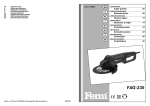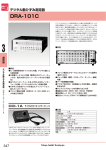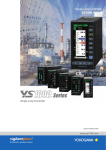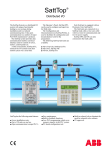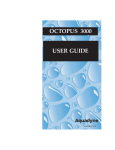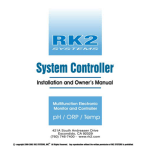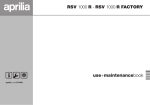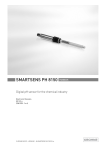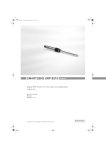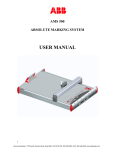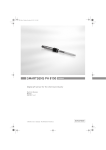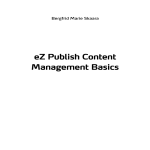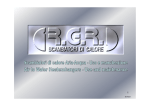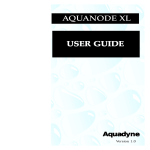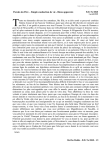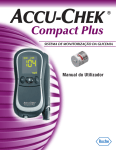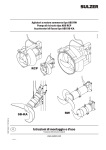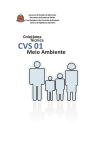Download TermoRens as
Transcript
TermoRens as A Anodix type S X NODI Anodix type L For safety every day... WITHOUT LEGIONELLA 1 TermoRens as A X NODI Table of Contents TermoRens a/s info.....................................................................3 Introduction.................................................................................4 Legionella bacteria......................................................................5 Methods of combating legionella bacteria High concentration chlorination.................................................6 Chlorine dioxide vaccination Peroxide vaccination (H2O2) and ionization Copper and silver ionization Electrodiafragmalysis.................................................................7 Filtering in closed position Bacteria filtration UV radiation................................................................................8 ANODIC OXIDATION, ORIGINAL ANODIX method.......9 Mode of operation ANODIC OXIDATION Anodix Standard.......................................................................10 ANODIX in combination with NaCl dosing............................11 Product data sheet for ANDODIX type S, M and L.................12 Guidelines for planning and installation...................................13 Article written by ChA MR Dr. med. Maria Gerhardt........ 14-16 CE Certificate............................................................................17 Anodix scientific tests......................................................... 18-19 Manufacturer’s guarantee.........................................................20 Energysavings with Anodix......................................................21 Termoclean..............................................................................22 2 Work instructions for cleaning with Termorens........................23 TermoRens as A X NODI TermoRens as Was established in 1994 and specializes in the cleaning of waterborne systems. The company produces the cleaning fluid Termorens, maintenance fluid TermoSafe,Termorens Descale and TermoRens Toilet Clean, the soap that both cleans and disinfects the inside of drainage pipes. In addition, TermoRens a/s delivers supply pumps, Tett It and Anodix which combat legionella. TermoRens a/s has most large Norwegian industrial companies, housing companies, oil companies and shipping lines on its customer list. The company also supplies plumbers and wholesalers as well as performing some larger cleaning projects itself. By cleaning a heating or cooling installation with Termorens, bacteria in the installation are killed and internal deposit layers are broken down in order for optimal performance in the installations to be restored. Therefore customers can achieve large energy savings by cleaning the installations regularly. TermoRens and Anodix In recent years, TermoRens has also been used more and more often for cleaning cold and warm water pipes that have become clogged and lost capacity and pressure. In older installations it will therefore be an easy process to clean the installation with TermoRens before beginning with Anodix. The installation will consequently be guaranteed free of bacteria from the startup. Shipping and Offshore This has become a major market for TermoRens a/s. One large problem on ships and on platforms is buildup in vacuum drainage systems. Here a buildup of urine salts form that eventually completely blocks the pipes. By dosing TermoRens Descale into the installations, the accumulated growth will gradually be reduced until they are removed completely. In order to avoid the same problem again in both new and newly cleaned installations, TermoRens has developed a product called TermoRens Toilet Clean. This product is a very effective soap that when flushed down the pipes also cleans and prevents urine salts from accumulating on the interior of the pipes. Export TermoRens currently exports to Sweden, Finland, Poland, England, USA and Canada. All export thus far has been achieved through “word of mouth» reports about the high quality and effectiveness of the product. Thus, cooperation with Innovation Norge has been started to further expand export of the product. 3 TermoRens as A X NODI Introduction When the problem of legionella bacteria became known in the end of the 1970s Fa. Strele began thinking about finding a method and a device that would be capable of maintaining a water supply installation in a permanent state of exemplary hygiene. In addition tests were performed with this goal in mind. Devices and methods that had been offered up to this point in time including UV radiation, thermal treatment or chemical disinfection were regarded by Strele Wasserhygiene as last resorts without lasting results. One option was to adapt the known method of chlorine electrolysis so that it could be put to use in a standard household installation. Devices that were developed after this were frequently tested and constantly adapted to accommodate practical situations until they were ready for production. On request from the Netherlands Department of State a prototype was submitted and subject to extreme testing at TNO (the Netherlands organization for applied science research). The device that now had been given the name ANODIX proved in this test its high effectiveness. Within three hours the legionella bacteria infected water in a 2,100 liter water tank became bacteria-free (start with 100,000 KBE/ml, KBE = bacteria forming units per ml). In the meantime, ANODIX was put to use with great success in many hospitals, in addition to retirement homes, sports facilities, in the showers of bathrooms and swimming halls as well as other public institutions. In the year 2000 Wolfgang Strele was given an Innovation Award in Amsterdam by the Netherlands department for environmental protection for ANODIX. A network of representatives in Germany, Benelux and Austria guarantee that clients and interested parties receive technical service and advice from competent specialists. This is because compromises must not be made when combating legionella bacteria. ANODIX ensures the best possible solution to this problem. 4 Legionella bacteria Legionella bacteria have evolved to become a threatening, invisible «ghost” in the field of sanitation. These bar-shaped bacteria exist in all types of fresh water. TermoRens as A X NODI In the Legionella family there are currently 42 known breeds with 64 subgroups that that can be serologically distinguished from one another. Legionnaires’ disease – named after the former Korea legionnaires who became infected in connection with a war veteran gathering at a hotel in Philadelphia - is an acute, serious bacterial lung infection (pneumonia). Everybody is vulnerable to the disease, but there is an increased risk for the elderly, hospital patients, smokers, diabetics - in short: people with weakened immune systems. Infection occurs in the respiratory passages by breathing in tiny water droplets in the air (water vapor, for instance when taking a shower) that contain bacteria living in the water. Legionella bacteria need a specific environment in order to survive and breed. Ideal conditions usually exist in water pipe systems. Besides a rich source of nutrients from the biofilm on the metal or plastic pipes, rubber gaskets and membranes, reproduction is further facilitated due to the relatively low temperature in hot water systems. For reproduction the legionella bacteria utilize one-celled organisms (amoebas) that also live in the water and biofilm. When these one-celled organisms feed on the legionella bacteria their digestive systems become inactive. Because of reproduction inside the amoeba, the legionella bacteria are protected against external harmful effects. Reproduction continues inside the amoeba until it bursts. In optimal conditions the legionella bacteria double in number every three hours. If the legionella bacteria enter into the lungs when breathed in by a person with a weakened immune system they are in fact consumed by the macrophages (digestive cells), but due to a lack of resistance these cells are also blocked and are used as a breeding ground. Other bacteria that flow with the air breathed into the lungs can no longer be combated. In the early stages the sickness can resemble a cold with coughing and headache and with a healthy immune system runs it course and is finished within a few days. However, the acute, serious Legionnaires’ disease is in the case of a weakened immune system fatal in about 20% of cases. 5 Methods of combating legionella bacteria For many people the process of thermal water treatment remains the technique of choice for combating legionella bacteria. Meanwhile, long practical experience and research have shown that with thermal treatment one only accomplishes reducing the legionella bacteria population for a short time period. The legionella bacteria are protected in water pipes which are not in use, in deposits, on rubber parts such as gaskets and in amoebas. In the early growth phase (as cysts), the bacteria encapsulate themselves in order to survive high temperatures (Olbrich). In addition the biofilm in the pipes react with increased growth resulting in a need for the thermal treatment to be carried out more and more often in order to accomplish a satisfactory result (Prof. Tiefenbrunner). Furthermore, the water in large piping systems such as those found in hospitals and hotels is cooled down due to the long length of the pipes, thus the necessary temperature for elimination of the bacteria never reaches all the way to the end of the pipes. The guidelines require the hot water used in the thermal treatment to flow out of each tap with a steady temperature of 70 ºC for at least three minutes. This requires lots of personnel because of the need to protect people present in public buildings from being scolded. Also the energy consumption is economically unfavorable and irresponsible, largely because one does not achieve a legionella bacteria-free state for any significant length of time. Because of the high temperatures involved in the process, the installation material ages faster, zinc protection layers on the pipes are damaged and plastic parts become brittle and crack. Cold water lines in the near vicinity heat up which make them vulnerable to bacteria attacks as well. In many cases the hot water tanks capacity is not big enough to deliver the appropriate amount of hot water required for thermal treatment resulting in interruptions in the treatment. The recommended continuous temperature of 60 °C for the water is indeed enough to kill legionella bacteria, but only if the water is not cooled along the way as a result of long pipe distances or inadequate isolation, and if all pipes are flushed regularly and there are no significant deposit layers present in the pipes. Furthermore, it should be mentioned that this is a waste of energy because there are other more effective solutions for achieving a hygienic state. There are many methods and devices for thermal treatment of water. They all have in common that water is cleansed of bacteria with high energy consumption, but also that the bacteria’s basis for life, the biofilm, remains intact in the pipes and therefore leads to a risk of repeat bacteria attacks and infection. High Concentration Chlorination High concentration chlorination aims to rid a system of bacteria in as short amount of time as possible. For this process the pipe network must be filled with highly concentrated chorine. Chlorine and chlorine gases are poisonous. This dangerous process can only be done by specialists because chlorine is corrosive and dangerous for the human respiratory system. After disinfection the pipes must be rinsed and flushed thoroughly. However, leftover concentrations can still be present in pipes with stagnant water, in vertical pipe ends, in mixing batteries, thermostats, and deposits. The effect only lasts a short time. New contaminations cannot be avoided. 6 Chlorine Dioxide Vaccination Chlorine dioxide has an oxidizing effect 2.5 times stronger than chlorine alone. The formation of tri-halogen methane (in connection with organic material in water) is somewhat smaller than with chlorine. Chlorine dioxide is in a gaseous form and at temperatures higher than 40 °C from10 gr/liter is highly explosive. However chlorine dioxide vaccination is easy to put to use as a two-component method. Caution: The finished ClO2 solution should always be used with great care. Spilling this fluid and damaging or unexpectedly opening the container can easily lead to corrosion in the lungs. In warm water from 35 - 50 °C, chlorine dioxide does not have a sufficient disinfecting effect. Used in cold water chlorine dioxide is broken down by the organic matter so that in distant areas of the piping system almost has no disinfecting effect. Solving this problem by adding more chlorine dioxide is not possible because then the limit value of 0.4 mg/liter cannot kept. Peroxide vaccination (H2O2) and ozonization Peroxide and ozone are extremely toxic. Neither of these is advisable for the disinfection of drinking water. Depending on the water composition, tri-chlorine nitromethane can be produced, and because of the cytotoxic effect of peroxide, also can lead to other health hazardous disadvantages (Prof. Dr.Dr. de Groot, University of Essen). Copper and silver ionization The bacteria killing effect of copper and silver is well-known. However, their use in drinking water is prohibited because according to regulations heavy metals are not to be introduced into drinking water. Studies conducted by Dr. W. Mathys (from the University of Munster) have shown that a lasting disinfection of bacteria is not achieved using this method. Copper pipes initially have a bacteria killing effect because they shed Cu-ions into the water. However, as soon as on oxidation layer has formed on the inner walls of the piping (a natural layer of protection), which happens relatively quickly, there is no longer any significant bacteria killing effect. Electrodiafragmalysis method The process of electrodiafragmalysis is a method which was originally developed in Russia where drinking water is led through an electrode chamber and the electrodes are separated with the use of a semi-permeable membrane (Diafragma). With this method one is able to avoid a mixing of the products produced at the respective electrodes, while the flow of electrons through the membrane is secured. Sodium chloride (common salt) is added to the drinking water that was in advance made soft through the process of ion exchange (removal of calcium). This water is stored in a container before being led into the anode chamber. Oxygen rich water is produced in this chamber with the use of hypochloric acid as well as other oxidation agents. Likewise, this solution is stored in a container and fed into the piping system with a dosing pump. The water that flows through the cathode chamber is removed according to guidelines. Because of the construction, maintenance is expensive (ca €1500/year), and consumes a substantial amount of waste water (4 liters/hour) and the method demands replacing of the vulnerable membrane despite removal of calcium. 7 There would also be the need for permanent chlorine measurement in order to avoid exceeding the maximum allowed under German drinking water regulations (TVO). End position filters Because of the high cost, end position filters are only used in very sensitive areas such as hospitals’ maternity wards, intensive care units, surgery wards, as well as wards for bone marrow transplants and dialysis, etc. The end position filters are made up of plastic capsules with pleated filter foils or capillary tubes. The filters are installed relatively quickly and only last a short time. If they are installed in showers one does not prevent recurring bacteria attacks in the shower hose on the side of the shower head. Rather there will be bacteria growth on the filter surface (on the output side). Bacteria filtering The filters are comprised of miniature capillary tubes that are bunched together and completely closed on one end. The filter capillary tube walls are porous and hold back the bacteria in the micropores. Since the production of the pores is never completely even, viruses are never completely filtered despite contrary claims. Nutrients which nourish the bacteria are also not blocked. Dissolved minerals also pass through the filter. Therefore, the formation of a biofilm is sure to happen, especially because evidence shows that there exists a bacteria attack from the taps and back to the network of pipes. To avoid clogging the filters need to be regularly flushed with an additional device (2 – 4 times/hour) which leads to water waste unless this water can be utilized in other ways despite the concentration of bacteria it holds. In especially stubborn cases (blockage) the filters need to be rinsed with acid. This is complicated and time-consuming work that needs to be carried out be a professional plumber. Each filter input gets clogged eventually despite flushing which results in a loss of pressure in the pipes. It is then necessary to replace the entire filter bunch. The membrane pressure (hollow fiber tube) must not exceed 2.5 bar. At higher pressures or on pressure surges (up to 60 bar) the fibers are damaged and/or the biomass within them is forced through. The capillary tubes are made up of polyethersulfone. According to the Goodfellow Chambridge Research Center PES in the capillary tubes tend to result in tension cracks. Cracks in the bunch of filters cannot be detected, and transfer of bacteria to the pipe network is virtually unavoidable. UV radiation UV radiation has been practiced sin around the 1950s for disinfecting drinking water. At radiation treatment in the area of 254 nanometer (wavelength) bacteria are killed by damaging the genes (DNA) they are made up of. UV quartz tubes eventually lose there radiation intensity and must be replaced regularly, a costly procedure. In addition calcium deposits are formed on the UV quartz tubes which leads to chance bacteria are not sufficiently removed. Only the water which flows through is treated. The biomass in the pipes, the source of ongoing bacteria growth, is not touched. In the water from which bacteria has been removed growth immediately recurs. Bacteria that are encapsulated in amoebas are protected. 8 Diagram of ANODIX type M/L Ventilation Electronics 80 cm space for changing of anode Oxidation chamber Outlet Electrode cable is tightened manually with the fingers Check valve Mode of operation ANODIC OXIDATION – Original ANODIX Method A further development of ”anodic oxidation” cause legionella bacteria, as well as other bacteria, to be killed as they flow with water through a specially developed and patented electrode pack (pipe-in-pipe form). Oxygen radicals that develop on the anode surface (in statu nascendi) bring about an oxidation of the flowing bacteria, viruses, fungus and algae. At the same time metastable oxidizing agents are formed from the contents of the water (for instance chlorides). These are led in continuous circulation through the hot water system. This guarantees that the existing biofilm, which comprises the basis of existence for microorganisms, is broken down. The various oxidizing agents formed from the water at the electric field are together more effective than for example individually utilized disinfection agents. The oxidizing agents formed from anodic oxidation - through the Original ANODIX method comply with requirements in item 1a and 1c (List with descriptions of treatment agents and disinfection methods in accordance with § 11 in the German drinking water regulation of 2001). ANODIX apparatuses can be used in accordance with DVGW’s (German association for gas and water industry) worksheet W 551, April, 2004. After the biofilm is broken down in the pipes, a depot effect is maintained for several days. A condition for the hygienic water quality to be maintained is therefore that water is replaced in pipes with little use (recommended 1 x per week).(anbefalt: 1 x ukentlig). To ensure that the water flowing through the electrode pack is treated, it is necessary to treat the whole water current. This is achieved with ANODIX and the special electrode form (pipe-in-pipe electrode) and the direct connection with the water pipe. 9 The Original ANODIX Method is a combination of anodic oxidation and chlorine measurement and / or ultrasound (the latter is patented). The combination of anodic oxidation and ultrasound is primarily used in older systems with a strong amoeba presence. The amoebas are opened in the ultrasound chamber and the bacteria that are released are killed in the oxidation chamber that follows. In addition ANODIX is delivered in combination with chlorine measurement, regulation and NaCl-dosing in accordance with the location’s needs and customer’s requests. The ANODIX method has been in use in hospitals since 1996 with proven results. A special control mechanism guarantees that the ANODIX method does not have an impact on medical equipment. Water quality is maintained through planning, installation and operation conditions in accordance with TVO drinking water regulations. No aggressive substances are released into the water. All water-bearing components are regulated by the German association for gas and water industry, DVGW. Anodix Standard The standard apparatus is comprised primarily of electronics, the oxidation chamber and the turbo-flow sensor. Anodix is usually installed as a bypass apparatus in the cold water supply to the hot water tank, and all of the water (100% of water volume in the system) passes through the oxidation chamber. For continuous treatment of the water in circulation the circulation pipe is removed from the hot water tank and installed in front of the ANODIX apparatus in the cold-water pipe. The ANODIX electronics are connected to the oxidation chamber which includes the electrode pack via live wires (lowvoltage). The water treatment is automatically regulated by the electronics independent of water quality. The synergetic effect kills bacteria and viruses, produces a depot effect in the entire circulation and the biofilm, the microbe’s basis of existence, is broken down. Due to the treatment of the entire water stream and placement in front of the hot water tank no dangerous hydrogen gas is produced with ANODIX. Thus corrosion in the pipes from hydrogen gas is avoided. To avoid gas production while the water is still (for instance in cases of circulation pump failure) the electrode pack is automatically switched to powerless with the turbo-flow sensor. The flow amount is displayed with light diodes which make for optimal operation surveillance. 10 ANODIX in connection with NaCl-dosing In order to achieve a depot effect in the pipeline for breakdown of the biofilm it is necessary to have at least 25 mg chlorides per liter of water. ANODIX transforms these chlorides using the electrode pack to hypochloric acid and hypochloride. This weak, but ever-present hypochloric acid is enough even though the effect is in the beginning neutralized more quickly because it is broken down over time. Brine is added to water which has a lack of chlorine. The vaccination occurs with the help of an impulsator dosing device (ANODIX GmbH) which is connected in front of the input to ANODIX and after the circulation line is connected to the cold water supply for the hot water tank. The amount of hypochloric acid is diluted with the water from the fresh water supply and from the constant tapping. During nighttime operation the concentration and effect become stronger. Because of the varying amounts tapped from the system it is still not possible to achieve a precise and unchanging amount of hypochloric acid. Even measuring devices for electronic dosing regulation (with chlorine equivalent measurement as in for example conductance or redox) fail because of other components in the water as for example minerals (over- or underdosing). Salt is usually dissolved in the brine container and the amount is gradually increased. (Chlorine portion from 50 to 70 mg/liter.) In the samples the content of free chlorine must also be measured. This is currently not easy to determine, but must not exceed 0.2 mg/liter. Thereby one still has a margin to allow for variations in concentration (TVO: Max. 0.3 mg/liter). Legionella bacteria cannot be eliminated with chlorine. A constant presence of oxidizing agents such as hypochloric acid in the pipeline ensure a depot effect and the breaking down of the biofilm. The brine container must be cleaned as soon as nonsettleable solids can be seen in the brine. The suction valve must not be on the bottom. (Hoses are attached). Under normal operation the pump shows a green blinking light. On operation interruptions or when the container is empty the light is red. In these cases the pump will automatically switch off. If the suction line is filled with air (after the container is suctioned empty) the line can be deaerated. 11 This is done by pressing in the white lid along the edge on the side of the pump and loosening the pump screw underneath. At the same time the foil keypad on the pump (hand symbol) is kept depressed until water begins to flow. The ventilation screw should be closed. The container should only be filled with enough brine to avoid overheating in high room temperature scenarios due to quick consumption. One can also keep the brine free from bacteria by adding catadyne tablet. Product Data Sheet Technical Data ANODIX Standard ANODIX M og L Casing Stainless Steel Stainless Steel Enclosure rating IP 65 IP 65 Display LED LED Supply Electricity 230V/50Hz 230V/50Hz Input power Automatic, according to setting max. 40 W Automatic, according to setting max.750 W Contact for remote control Potential free contact Potential free contact Connection electrode pack Gavanic isolation Gavanic isolation Allowable ambient temperature 0-30 ºC 0-30 ºC Electronics: Oxidation chamber: Parts in contact with water, approval DVGW, SKZ, KIWA, ÖVGW Casing, socket welding Polypropylen-R Polypropylen-R Max. continuous temperature 60 ºC 60 ºC Allowable operation excess pressure 7 bar/60 ºC 7 bar/60 ºC Max. stress Liter pr hour 4 kbm/hour M 8 - L 15 kbm/hour Electrode pack titanium Pipe-in-pipe system Pipe-in-pipe system Connection dimension 1 ” Automatic ventilator 3/8”, 10 bar 3/8”, 10 bar Cabel connection with eye 1,5 square inches 1,5 square inches M 5/4 ” - L 2 ” Ultrasound chamber: 12 Casing Stainless steel Connection 2” IG, stainless steel Draining with ball faucet 3/8” IG Guidelines for planning and installation Compliance to the guidelines is a condition for a 2-year guarantee and ensures optimal effect from ANODIX with a depot effect all the way to the armatures. This must be specified in descriptions of performance specifications. 1) For older buildings ANODIX GmbH must in all cases prepare a technical-hygienic analysis of the building’s installation. The analysis includes a thorough inspection of the sanitary system with indications of weaknesses as well as a chemical analysis of the water. Preparation of a protocol with photographs as evidence, an overview of measures to be taken in the building with suggestions for economically favorable solutions, information for the installer at the site of enclosure, final testing, technical support up to 6 months after the system is put to use, expenses in accordance with the price list “Technical-hygienic analysis” as needed. 2) Before planning the person who operates the installation (the client) must carry out water tests with legionella bacteria without prior heating. The test samples must be taken from the hot water tank’s drain cock, the circulation separator as well as two faraway shower heads. The results must be conveyed to ANODIX GmbH. The test samples should be taken from the first water that comes out. Testing water that has been flowing for a long time will give false results. 3) It is important to ensure that ANODIX Standard is only installed seated on the pipe with the air vent facing upwards. Installation must be carried out without electricity. Both ANODIX Standard and Combi must be placed so that the electrode pack can be pulled out sideways for control. For this it is necessary to have an extraction length of approximately 80 cm. 4) ANODIX is equipped with special electrodes to reduce deposits as much as possible. Depending on the hardness of the water it is still necessary to occasionally remove calcareous deposits. Regular checks conducted by the sanitary installer will ensure that the electrode pack does not calcify. With an isolating calcareous layer the effect will be greatly reduced or stop altogether. 5) In all cases the water tank must be cleaned thoroughly (accept in new installations). Furthermore, the water flowing in must be directed toward the bottom in order to avoid sedimentation (if necessary install a curved pipe or bounce plate!) 6) Pipes with still water must be removed or cut off directly on the main. Hoses that are attached must be removed and drained. 7) Operation of ANODIX must be connected over a flow sensor for safety reasons. If there is no flow in ANODIX electricity to the apparatus must be switched off. 8) The entire volume of hot water must within 1 hour flow through ANODIX 2 times. In order to achieve this existing pump performance (manufacturer diagram) must be checked as well checking that flow through peripheral pipes is sufficient (adjustment). 9) After the system is put to use the water temperature can be lowered as much as possible and reliable without causing the formation of a new layer of bacteria. 10) 6 weeks after it is put to use the person responsible for operating the system must see to it that water test samples are taken in the same places as before. The test results must be conveyed to TermoRens a/s immediately. The test results will then be compared and are necessary in order to find potential concentrations of legionella bacteria still existing (for example in pipes with stagnant water) and remove them with the appropriate measures. 11) Reference: Upon later changes or expansions of the sanitary system it must be checked that the functioning or effect of ANODIX is not reduced (for instance in cases of connection of partial areas, pipes taken out of use, rooms in hospitals, hotels, or retirement homes and such that are 13 Legionella bacteria: A nightmare under control By ChA MR Dr. Med. Maria Gerhardt The discovery of legionella bacteria in a hospital can be a nightmare for sanitation technicians, but they are not alone. From a sanitation perspective the risk and possible complications for patients and personnel must be discovered early on and countermeasures put into action. To ensure the ongoing operation of the facility the hospital owner must protect the mentioned parties from getting sick or injured. With the change in patient clientele because of increasing age and because patients suffer from multiple simultaneous illnesses, because of alcohol and drug abuse, immune suppression, neoplasis and chronic lung diseases one can get infections in hospitals, and then also a lung infection caused by legionella bacteria. What are legionella bacteria, where are they found and how are they contracted? Legionella bacteria are gram negative, bar-shaped bacteria that exist in all fresh water and come via drinking water to installations in buildings where they are distributed. Reproduction occurs in the hot water system, but also in poorly isolated cold water pipes and distribution systems which are not in active use. Within 3 hours the number of bacteria is doubled! Since 1976, when 182 legionnaires attended a meeting in Philadelphia and contracted pneumonia and 34 of them died, legionella bacteria have evolved into an impending danger. After intense research these bacteria were discovered and one could ascertain that they were the cause of the legionnaires’ illness – hence their name. Since then shocking reports of legionella epidemics have aroused public interest (flower festival in the Netherlands, swimming halls in Berlin, cooling towers, air conditioners in Spain). Retrospectively one could clear up the mystery of legionella epidemics which occured at a hotel in Philadelphia in 1974, a psychiatric hospital in Washington D.C. in 1965, a meat factory in Minnesota in 1957 and in a military camp in Carolina in 1942. Legionella bacteria exist only in water. They are not transferred from person to person, but rather from direct contact with running water. There are other possible modes of transfer. First and foremost bacteria are transferred via aerosols (water vapor), Jacuzzis, in showers and in pools with pulsating water. In connection with hospitals the bacteria are transferred through aspiration and drinking of legionella infected water during suctioning, oral treatment procedures, nourishment via nasogastric tubes and through ultrasound vaporization for water humidification. Sore infections can occur when flushing or cleansing them with running water. Legionella bacteria can result in two different illness scenarios • • Pontiac fever which runs it course within 25 days and has not further complications, and Legionnaires’ disease, an acute, serious progression of pneumonia which is fatal in about 20% of the cases Evidence of the existence of legionella bacteria somewhere does not necessarily lead to infections. For them to cause illness a number of unfavorable conditions must be filled, first and foremost the water that holds the legionella bacteria must be vaporized in order to enter into the lungs. Preventative measures Despite varying opinions among hospital sanitation specialists regarding at which point actions for decontamination should happen, most commonly when there is one certain or two possible cases of legionnaires’ or sooner, it is my opinion that preventative measures should be taken even without cases of infection because in this way one fulfills the obligation to reduce risk as much as possible for patients and personnel. 14 The German law regarding protection against infections from July of 2000 states in § 37 that “Water for use by humans must be safe for use and consumption with regard to health, especially with regard to pathogenic bacteria or similar.” This requirement must be fulfilled. Because of the modest contributions on the one side (to make specific requirements for the planning, building and operation of technical sanitation devices and ensure that these requirements are fulfilled, take into consideration the recommendation of DVGW and VDI - Association of German engineers) and ethical, health and judicial considerations on the other side, it is necessary to take countermeasures against the colossal formation of legionella bacteria in hot water installations. Methods and assessment of methods DVGW recommendation In the fight against legionella bacteria one normally refers to the DVGW recommendations W 551 and W 552 which deal with the thermal treatment of drinking water. This is for the most part correct, but W 551 and W 552 do not take into consideration that hospitals have water running around the clock. Aside from the risk of somebody being scolded by turning on a water faucet – the whole system must be heated – this treatment can not be carried out because of consideration to personnel, electricity consumption and high cost. It has been shown that in practice thermal disinfection only has a short-term effect and must be repeated often. Indeed legionella bacteria cannot survive temperatures of 60° and die if they are reached. However the bacteria are protected by the biofilm in the water pipes in which the bacteria live and reproduce. As with thermal disinfection, short-term percolation, water peroxide disinfection, ozonization, chlorine dioxide disinfection, copper-silver ionization and UV radiation have a number of disadvantages which cannot be trivialized and bring up an extremely critical assessment of cost, side-effects and the effectiveness of each individual method. Anodix legio-stop The Anodix legio-stop apparatus (on the market since 1996) works with the principle of anodic oxidation which is based on disinfecting agents being produced in the water itself. Main active agents include hypochloric acid, oxygen radicals as well as hydrogen peroxide and ozone in small amounts. The disinfection is caused by the combination of these agents and their synergetic effect. Two results are achieved with anodic oxidation: Legionella bacteria are killed in the water and the biofilm which protects reproduction of the bacteria is broken down. The Anodix legio-stop apparatus is normally installed in the cold water input to the hot water tank (see installation outline) so that the cold water first must pass the electrode pack. The arrangement of the electrode pack drives the bacteria to its surface and the bacteria membrane is destroyed with its electrical current. The fact that the pH is lowered on the anode and oxygen releases has a favorable effect on disinfection. In addition hypochloric acid is generated directly from the water and produces a depot effect in the pipe network and contributes to the breaking down of the biofilm. By connecting the circulation line in front of the Anodix apparatus to the cold water line it can furthermore be ensured that existing bacteria desimate. An adequately powerful circulation pump must be able to make all water in the system flow through the Anodix apparatus within 2 to maximum 3 hours in order to ensure that the rate of legionella bacteria killed is greater than the growth rate of the bacteria. Installation of the apparatus, which continuously makes measurements and adjustments, can as mentioned be done without a large space requirement (figure 1). Our hospital chose two different connections of the apparatus to the pipe system for two separate areas. Figure 1 shows the arrangement of the first apparatus in the hot water circulation including connection of the cold water line (modernization of the building). In the installation of the other device Anodix legio-stop was installed in addition. Due to the high volume of water consumed in this area for which one apparatus would not have the capacity to handle alone, two apparatuses were installed in the following way (figure 2): The cold water line (drinking water) in the building without hot water flow, and a separate circulation line with supply of cold water. 15 Before and after the installation water samples were taken from various predetermined areas and microbiological tests were conducted. At first samples were taken once per week, now they are taken once per month and later there will be quarterly tests of the water samples. Preliminary results Despite shortcomings of the installation in the modernized building (among these several pipes with stagnant water) the effect of the Anodix apparatus can be proven in both cases. Results from the tests – before and after flow through the apparatus – already show a 98% reduction in bacteria levels. The trend in the existence of legionella bacteria clearly points to zero. Prevailing conclusions to date: Lines with stagnant water in the installation lines can in new buildings and in cases of modernization be excluded Hot water circulation lines must lead to the outlets. Thereby a permanent circulation of the hot water can be guaranteed The entire volume of hot water must flow through Anodix within 2 hours to ensure that the rate of killed legionella bacteria is higher than the growth rate of the bacteria. Showers which are not in use for long periods of time (weeks at a time) can with the installation of a snap fastener easily be disconnected and reconnected to the network. The showers can be drained completely and dry out. In the tests from 25.09 of this year there were not found legionella bacteria in the patient areas. In two samples from the tanks there were still legionella bacteria. The good results that were achieved with the cleaning of the tanks will be shown on the next samples taken, and likewise in the other areas from which samples are taken. Further information and literature can be ordered from: Klinkum Chemnitz CmbH Krankenhaushygiene und Umweltmedizin ChA MR Dr. med. Maria Gerhardt Flemmingstraße 2 D-09116 Chemnitz Tyskland 16 ANODIX Termo Rens as CE ANODIX TermoRens as Postboks 3535, Kjørbekk 3703 SKIEN, NORWEGEN EU – conformity certificate It is hereby certified that apparatus type: ANODIX description: legio-stop is in accordance with the directives from the Council of the European Union on harmonization of regulations in member countries ∑ regarding electrical operating equipment for use within stated voltage limits (73/23EØF modified by 93/68EØF) ∑ regarding electromagnetic tolerance (89/336EØF modified by 91/263EØF, 92/31EØF, 93/68EØF). The accordance is established by compliance to the following standards: - EN 61010 - EN 50081-1 - EN 55022 - EN 61000-3-2 - EN 50082-1 - IEC 61000-4-8 - IEC 61999-4-3 - ENV 50204 - IEC 61000-4-2 - IEC 61000-4-6 - IEC 61000-4-4 IEC 61000-4-5 IEC 61000-4-11 IEC 61000-4-6 Safety requirement for electrical equipment for control and measurement and laboratory use Electromagnetic compatibility. Generic emission standard. Residential, commercial and light industry Information technology equipment. Radio disturbance characteristics. Limits and methods of measurement Limits for harmonic current emissions Electromagnetic compatibility. Generic immunity standard. Residential, commercial and light industry. Power frequency magnetic field immunity test. Residential, electromagnetic high frequency fields, amplitude modulated Radiated electromagnetic field from digital radio telephones. Immunity test Electrostatic discharge Immunity to conducted disturbances, induced by radio-frequency fields Fast transients Surge immunity Voltage drop, voltage interruption Immunity to conducted disturbances, induced by radio-frequency fields Inspection report consisting of 126 pages is available from TermoRens AS for a fee. Inspection institute: M. Dudde Hochfrequenztechnik, authorized by the German accreditation council. 17 ANODIX Anodix has passed a scientific test The method with which legionella bacteria is combated that was developed in 1995 by ANODIX GmbH (formerly STRELE Wassertechnik – Lohmar) and which is based on the principle of “anodic oxidation” (the ANODIX method) was examined in a scientific test. Because of good results achieved without exception during the last few years with the ANODIX apparatus in Germany and abroad the manufacturer decided to have the apparatus tested in the Netherlands where the problem of legionella bacteria is taken up almost daily in the press. Drinking water: Food article number 1 The Organization for applied scientific research TNO in Zeist (NL) which is recognized in all of Europe and cooperates with German institutes proved itself predestined for the study. There testing is done on products from national and international food corporations. In accordance with KIWA, (the Dutch organization which is the equivalent of DVGW – the German association for gas and water industry) and which is approved by the ministry of public health, the microbiological studies were concluded in the end of June 2000 with excellent results. TNO study The ANODIX apparatus was tested on a circulation of drinking water which was infected with Pseudomonas fluorescens and Legionella Pneumophila respectively. For this purpose a testing device was built with a circulation pump and a total volume of 2,100 liters of water between which the ANODIX apparatus could be connected. The test installation was a practical simulation of a hot water circuit which is often the site for growth of legionella and other bacteria. In order to calculate the ANODIX apparatus’ capacity, 100,000 Pseudomonas fluorescens and Legionella pneumophila were added to the water respectively per ml. After having dispersed the test bacteria in the entire water volume the ANODIX apparatus was switched on. After 3 – 7.5 hours samples were taken for microbiological testing of the concentration of viable test bacteria. ANODIX utilizes the method of treating the entire volume of water, a method which has been known for years. This is to say the entire flow of water is led through the electrode pack, something which to an extent guarantees a constant water treatment and at the same time maintains the values set forth in drinking water regulations. In addition to contact with the electrodes, which kills the bacteria, oxidation agents are generated from the water’s contents (for instance chlorides) which is significant to the treatment because this produces a lasting disinfecting depot effect in the water lines. ANODIX was subject to more severe testing by doing each individual test in water with a chlorine content well below 0.03 mg/l. Thus the chlorine content was well under values which occur in practice. 18 Outstanding effect The deactivation of Psudomonas fluorescens was tested by the institute with a water temperature of 20 °C. The ANODIX apparatus reduced the number of Pseudomonas bacteria from 100,000 per ml to 1 per ml in just one hour (figure 1). The deactivation of Legionella pneumophila was tested at 23 °C and at 40 °C. At 23 °C the number of legionella bacteria was reduced from 100,000 per ml to less than 10 per ml in 3.5 hours (figure 2). At 40 °C ANODIX reduced the number of legionella bacteria from 100 000 per ml to 1,000 per ml in about 3 hours (figure 3). The difference clearly shows that legionella bacteria are more resistant than Pseudomonas bacteria and that they reproduce more rapidly at higher temperatures. The deactivation with ANODIX occurred despite the extremely low chlorine content of the water. This is primarily due to the treatment of the entire water flow with the pipe-shaped, radial special electrodes which fill the whole pipe diameter. Based on the test results stated above it can be concluded that with ANODIX for disinfection of a water system infected with legionella or pseudomonas bacteria you have a system which can substitute the heating of the water to 60 °C. ANODIX can also be utilized for disinfecting cold water which feeds the hot water system. ANODIX (patent pending) is available in three designs: 1. The standard version, type S, for prevention of legionella attacks and for decontamination of systems with weaker bacteria attacks with a depot effect in the whole pipe system. 2. Type M and type L consist of an ultrasound reactor and anodic oxidation for opening of the amoebas and destruction of legionella bacteria with a depot effect in the pipe system for older systems which are conducive to strong bacteria attacks. From Air humidifier To Fresh air Anodix S installed in the air humidifier of an air conditioning unit. 19 TermoRens as A X NODI Manufacturer’s Guarantee All Anodix apparatus type S, M and L are guaranteed in accordance with the new German law of 1.1.2002 if * 1) our installation instructions are followed, 2) the apparatus is installed, used, operated and checked in accordance with instructions in the ANODIX user manual 3) the electronic components are not opened and/or the ANODIX apparatus is not in other ways used in a manner which violates specifications and instructions. * an exception of this guarantee are parts which are subject to wear and tear such as the electrode pack, ultrasound generator, sonotrode, and flow sensor. Guarantee We guarantee a drastic and lasting reduction of the legionella presence in hot water systems that normally are vulnerable to permanent bacteria attacks all the way to the connection of the armature so that the human pathogen thresholdvalue of 10 KBE/1 ml is not met. Normally one can expect to achieve a value <1 ml. A condition is that ANODIX is operated in accordance with instructions and that TermoRens a/s or authorized reseller has been assigned to conduct preliminary preparations for existing systems. Six weeks after the system is put to use the operator must conduct the comparison test and send the results as soon as possible to TermoRens a/s. External influences, fluctuations due to influences from the special system (such as undetected areas with stagnant water, installation work conducted on water lines in the street or in the building sanitary system etc.) cannot always be ruled out. We will be happy to provide advice in such cases. According to German public health regulation 30-7 of July 7th, 1987 a complete removal of legionella bacteria is unrealistic and considered hygienically unnecessary. It is a condition of this guarantee that a service agreement for the system has been made with TermoRens a/s. Applicable from 1. October, 2008. All earlier declarations are thereby not applicable. Responsible for content: Managing director: Wolfgang Strele Plumber w/VVS ing. Thore Andreassen 20 TermoRens as A X NODI Electrode cleaner Besparelser ved installasjon av Anodix Selv om Anodix ikke er laget med tanke på innsparing på varmtvannsiden kan man ved å montere Anodix i varmtvann systemet sette temperatur ned og spare store energikostnader. Konklusjonen i test fra TNO Nutrion and Food Reserach i Nederland konkluderer følgende: ”Anodix er et godt alternativ til å drepe Legionella bakterier i stedet for å varme vannet til over 60 grader” Testen er tilgjengelig hos TermoRens as. Man kan selv regne ut innsparinger ved følgende formel: Vannvolum x delta T ( temp. reduksjon ) ------------------------------------------------- = innsparing av kWh 860 Eksempelvis kunne en av våre kunder sette ned sin varmtvannstemperatur fra 80 til 50 grader. Forbruket i fra kl 06.00 til kl.18.00 var totalt 7 300 liter. 40 % av dette var varmtvann som gir følgede innsparing : 2 920 liter x 30 ( delta T før og etter ) -------------------------------------------- = 102 kWh 860 Utover dette vil man også spare inn store summer ved at rutinene med kloring, hettvanns behandling, tapping etc vil bli betydelig redusert. 21 Clean energy Cleaning fluid for removal of calcium, magnetite, oxidation (rust), humus, salt and other deposits. Product description: Termorens is a fluid which is biodegradable and does not contain any toxins. The fluid consists of citric acid, phosphoric acid, inhibitor and water. It is an easily mixed, yellow-brown fluid without a strange smell. Self-weight is 1.3 and pH is 1.5 Water pipe before and after cleaning Instructions and dosing Pipe systems which have become clogged and flow decreased over time with use need to be cleaned in order to maintain optimal effect. By cleaning with Termorens, all deposits are broken down and returned to fluid form in an easy way in order for the system to reestablish full capacity. Termorens is dosed into the system with a pump. In a heating system calculate 10% of the systems total volume. For cooling systems calculate 15% of the system volume. Cleaning is Water pipe with humus, done most quickly by heating to ca. 40 – 60 °C. oxides and calcium Cleaning can also be done with a cold mixture in cases where glycol is present in the mixture. When the fluid is mixed in it circulates with the system’s own pumps. Make sure to have all valves open to allow the fluid to reach everywhere. If one only wishes to clean alternators, individual hot water circuits, individual radiators, spirals, condensers or other things without circulation a circulation pump must be used. When to clean depends on Vacuum pipe with urine how much of a deposit layer is present in the installation and on its consistency. Normally salts most installations will have reestablished full capacity within 24 hours. When cleaning individual components the cleaning process is often only a few hours. We are a distributor of Promax pumps 22 Solid deposits such as calcium, rust etc. are changed into fluid form which is flushed out of the systems after cleaning. Flush all fluid out of the system after cleaning. TermoRens can be used on all types of plastic and metals without being harmful or abrasive. It does not damage gaskets and linings in the system. Cleaning of the system returns it to optimal performance which saves money through decreased energy consumption as well as unnecessary and expensive interruptions in operation. Anvendelsesområder: • Heating and cooling systems • Floor heating • Cooling ceilings • Boilers and hot water tanks • Condensers and evaporators • Heating and cooling batteries • Heat pumps • Cooling systems in cars and boat engines Also effective in glycol, sea and saltwater based systems. Diagram showing progress on the cleaning of a heat exchanger. TermoRens as Postboks 25 35 Kjørbekk 3702 SKIEN Tlf: 35 59 21 77 Fax: 35 59 85 43 E-post: [email protected] www. termorens.no HMS Data sheet available at www.ecoonline.no Work instructions for cleaning a cooling system 1. Termorens cleaning fluid is designed to clean cooling systems on the water side. The fluid can also be used even if glycol is present in the system. 2. Calculate or obtain details from landlord/consultant regarding the systems total water volume. Replace 15 – 20 % of the systems water volume with Termorens. First drain out the equivalent volume and dose Termorens into the system with a jacking pump or other pump. If it is an open tank the fluid can be poured directly in here. 3.When this is done the systems main pump should be started and the system can operate as it normally does. Make sure all valves are open to cooling batteries, convectors, cooling ceiling etc. so that that the entire system can be cleaned. 4.Normally the entire system will be cleaned within 24 hours. If the problem has become so severe that there is only a slight flow remaining in the system, the cleaning process should be done for a period of 48 hours. If the system has become clogged to the point of total blockage, it can take a few days for the fluid to work it way through the blockage. Do not attempt to remove these blockages with compressed air in advance as this will only further compress the blockage material and make it almost impossible to dissolve. 5.When the cleaning process is finished all water should be drained from the system. If the system does not contain glycol the water can be emptied directly into a drain. If the system contained glycol the fluid must be drained into special tanks and delivered to the nearest disposal station as glycol is hazardous material. 6.When the system is empty it can be filled once again. Afterwards the system should be rinsed well. This is an important part of the process so take care to do this right. Do as follows: Completely open the valve for the network water into the cooling system. If the system does not have a direct connection the main water network connect a hose which can tolerate pressures of up to 7 bar. Find a point at which you are ensured circulation for draining of the system. Attach the hose for drainage here. Adjust so that there is an equal amount of water flowing into the system as being drained. Watch the water level indicator for a period of time until this is stable. Then let this rinsing process continue until the next day. Normally you will find these points in technical rooms where the cooling machine is kept. 7. Test with a pH indicator (usually pH indicator paper is available from pharmacies and have a scale from 1 -13) that the pH in the water from the system is equal to that of the water supply. If the water from the system is more acidic, that is to say has a lower pH than the water from the water supply network, let the rinsing process continue until the values are equal. 8. The system is now cleaned and ready to be started. If glycol is to be added then first drain an equivalent amount of water from the system. This is usually 30% and will be -16 °C. If you increase this value to 50% it will be -30 °C. If the system is cooling something that has to do with food or food products use glycol of type monopropylene. 9. To prevent favorable conditions for the growth of deposits to start again add 2% Termosafe in the system. This adjusts the pH value to 9 and prevents anodic and cathodic corrosion from occurring as well as deposits forming in the system. 10.Keep in mind that when cleaning systems all oxides are removed. If these are stopping a leakage then it may begin to leak again during the cleaning process. Make this fact known to the client in advance who will be responsible for the cost fixing such leakages. The leakage would have occurred sooner or later regardless. These types of leakages are usually not a significant problem in cooling systems. 11.If you wish to see how much waste has been removed from the system you can take out a water sample and add caustic soda lye until the pH is higher than 7. The deposits which have become dissolved will then be separated and settle and can be physically seen in the sample Work instructions for cleaning a cooling system 1. Before cleaning it helps to heat the water in the system to 40 – 50 °C. Make sure to switch off the heating tank and leave it turned off throughout the entire cleaning process. This applies to both gas heaters and electrical heaters. 2. CLOSE VALVES TO HEATING TANK AND STORAGE TANKS. THESE MUST BE CLEANED SEPERATELY. The reason for this is slower water flow and that settlement of solids on the bottom can form early in the cleaning process from larger growth deposits in the radiator and other equipment. 3. Drain the system of an equal amount of fluid as cleaning fluid to be added. Use a water volume indicator or measuring containers for this. Normally 10 – 15 % of the systems total water volume is to be replaced with cleaning fluid. If the system is very clogged it might be necessary to add a larger percentage of cleaning fluid. Check this using a pH indicator in the system. The pH should be 2 after adding the cleaning fluid. If it has risen to a pH of 3-4 by the next day add more cleaning fluid. 4. Add the cleaning fluid to the system using a dosing pump. If you do not have such a pump available to you dose the fluid in from for example a plastic tank using a cabin pump. Make sure the pump is capable of pushing an equivalent height as you have in the system or more. (1 bar per 10m water column) 5.When all fluid has been added fill water into the system until the water column indicator is at the accurate level (equivalent to that during normal operation of the system). Afterwards air out the upper part of the system and add water. 6.MAKE SURE ALL TAPS AND VALVES ARE IN THE OPEN POSITION. 7. Start the system’s pumps for normal operation. Cleaning fluid and water will then be mixed and the cleaning process starts immediately. Let the cleaning process continue for minimum 12 – 24 hours. It does not hurt to let the process continue longer if there is a need. 8. When the cleaning process is complete the system needs to be rinsed. THIS IS THE MOST IMPORTANT PART OF THE PROCESS. Drain all water out of the system. Fill the system again and drain once again. Fill with water once again. When the water column indicator shows normal pressure open the tap to drain at te same time as fresh water is filled into the system. Balance this process so that an equal amount of water is added and drained. The pumps should be started and rinsing continues until the pH in the water being drained is equal to the pH in the buildings supply water. Check for instance at a house tap in the boiler room. When the pH is equal, the cleaning process is complete. 9. REMEMBER THAT THE CLEANING PROCESS UNCOVERS WEAK POINTS IN THE SYSTEM THAT HAVE BECOME OXIDIZED (RUSTED). 10. The appearance of the fluid during the cleaning process varies greatly depending on the deposit layer’s contents. It can be black to light brown. If there is substantial amounts of foam this is due to calcification. In such cases pressure may rise and activate the safety valve in the boiler room. Smell is also dependent on the contents of the deposits. It can vary from odorless to a slightly rotten smell. This will only be detectable in areas for ventilation or in the boiler room upon draining. There are no dangerous gases resulting from the cleaning process. The fluid itself is also harmless. If your eye is exposed to the fluid simply rinse with water or blink repeatedly to cleanse the eye. 11.If you spill the cleaning fluid on cars, floor linings, wall paper, etc. wash this with clean water before the fluid dries. 23 A X NODI For safety every day, without legionella! • Removes biofilm in the installation • Kills all Legionella • Easier operation of the installation • Energy savings • Service agreement offer TermoRens as CLEAN ENERGY! TermoRens as Pb. 2535, Kjørbekk, N-3702 Skien Tlf: +47 35 59 21 77- www.termorens.no

























